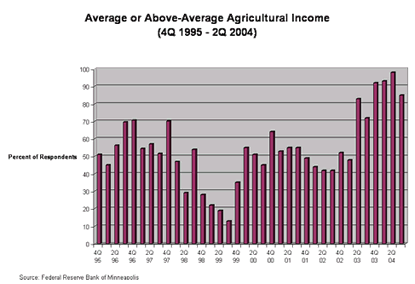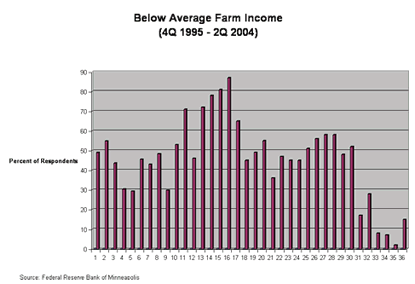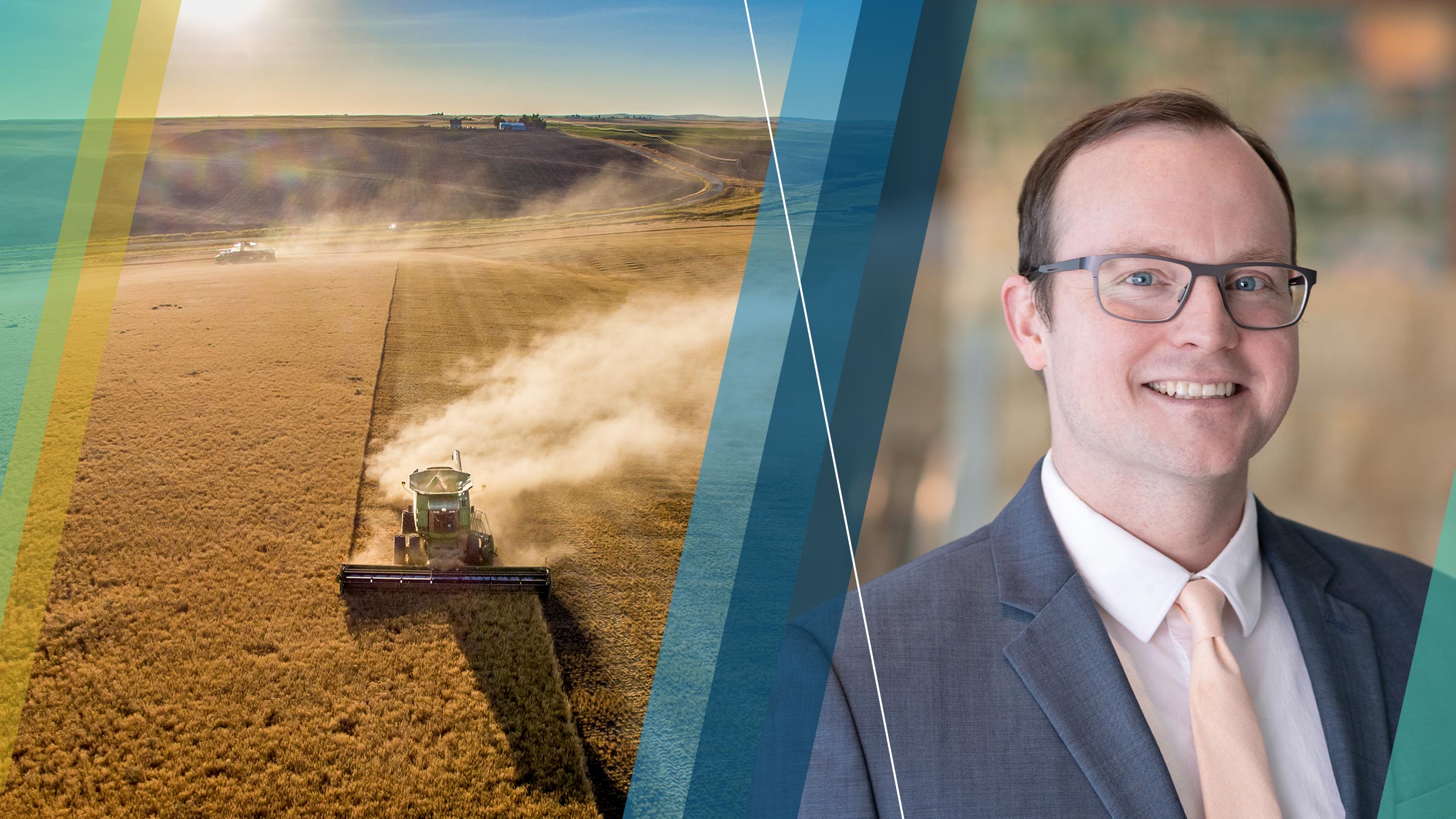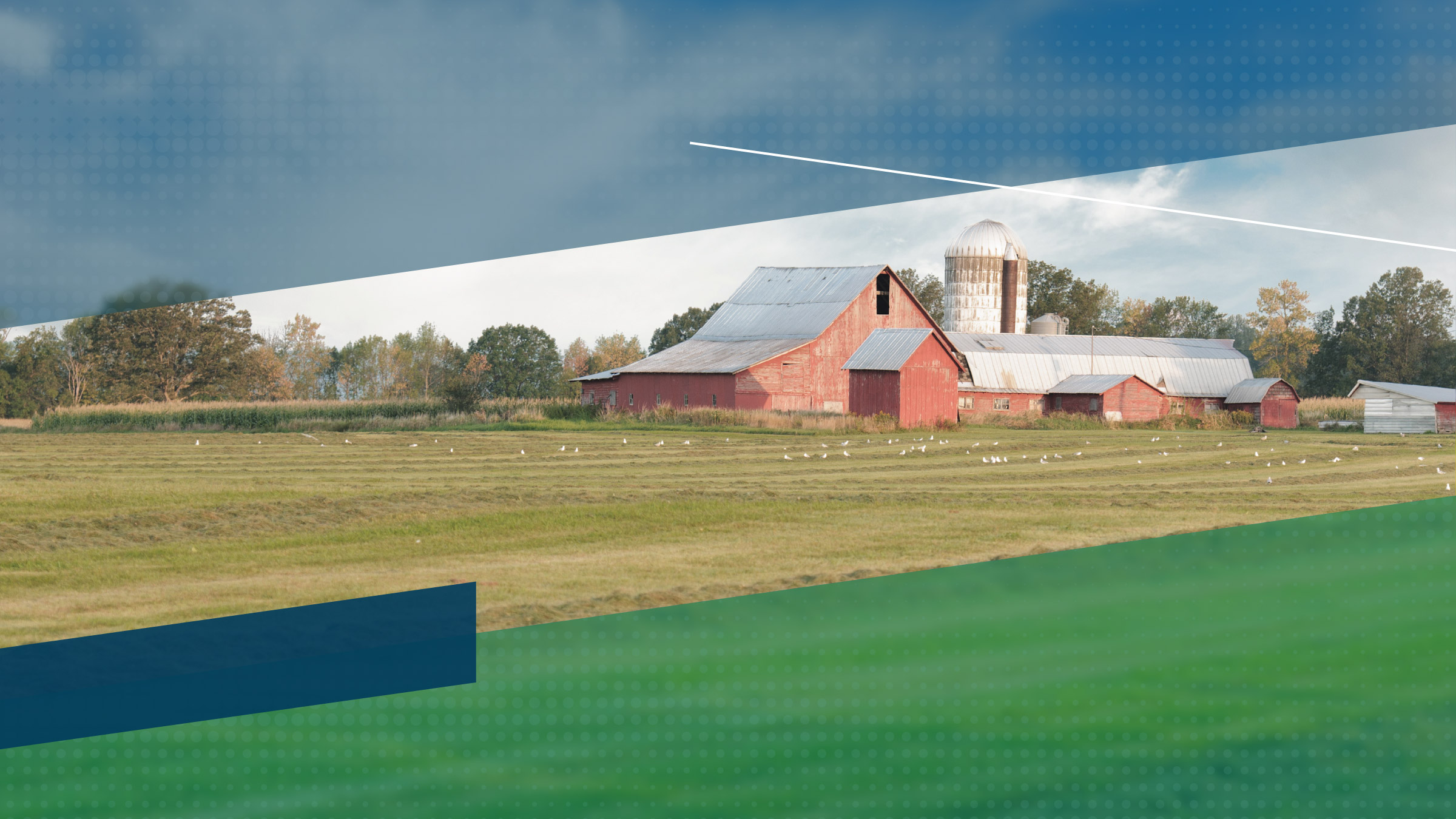Agricultural financial conditions were solid during the third quarter, according to the Minneapolis Fed's third-quarter agricultural credit conditions survey. Most financial indicators revealed that the agricultural sector improved. Farm income, capital spending, loan repayments and land values increased. Farmers and ranchers enjoyed strong prices for their commodities. While most also benefited from bountiful rainfall, cool wet weather hampered the harvest. Survey respondents expected this good news to flow into the fourth quarter as they expected their customers to increase borrowing to capture increased profit opportunities. However, concerns about rising input costs have some agricultural producers worried.

Farm income, farm household spending and capital investment
"Bumper crop yields," commented a South Dakota lender. "Cattle prices are higher," a Montana banker reported. The good yields and high prices produced robust income for farmers and ranchers, as 38 percent of lenders reported an increase and 47 percent noted no change in income. However, several negative comments were received regarding the cool growing season and a late harvest.

About a third of lenders reported their farm customers were increasing household spending and investing in purchases of machinery and equipment.
Loan repayments and renewals
Lenders indicated the broad-based financial strength of their customers. Only 5 percent indicated a decreased rate of loan repayments and 6 percent noted that loan renewals and extensions have increased. These low numbers were widespread across the district
Demand for loans, required collateral and interest rates
Some producers are expanding operations. About a fifth of lenders reporting increases in loan demand and two-thirds no change. Only 8 percent of the respondents indicated that collateral requirements have increased. However, interest rates increased during the third quarter, raising the cost of borrowing relative to the second quarter by about 20 basis points for fixed loans and 50 basis points for variable loans. Almost all lenders indicated sufficient availability of funds to lend.
Land values
Land values continue to increase across the district. Nonirrigated farm land and ranchland values increased from a year ago by an average of 14 percent and 28 percent, respectively. Lenders from western Wisconsin reported the largest increases. "Residential and development pressure is increasing the price," a western Wisconsin lender commented. (Note: land prices can vary significantly, not only from state to state, but also from parcel to parcel. For more detailed information on agricultural prices, see the Minnesota Land Economics Web site hosted by Dr. Taff at the Department of Applied Economics at the University of Minnesota.)
Outlook
"Steadily going up," commented a Montana lender, reflecting the overall outlook: 75 percent expect stable or increased income in the fourth quarter. Producers plan to increase capital spending and take out loans to finance purchases. More than a third of the lenders expect customers to increase capital spending and 28 percent anticipate greater loan demand. However, higher input costs may be a negative factor. "Rising fuel prices and rising interest rates will have an impact on farm income for 2005," wrote a South Dakota lender.
Appendices: State Fact Sheet | State Fact Sheet-Outlook





